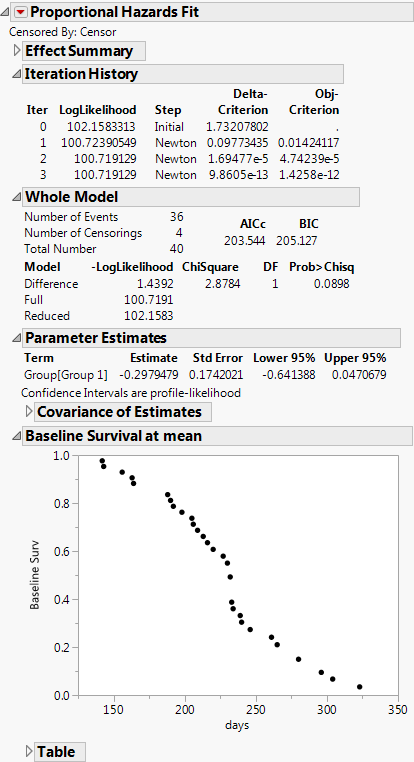The Fit Proportional Hazards Report
Finding parameter estimates for a proportional hazards model is an iterative procedure. When the fitting is complete, the report in Figure 15.5 appears.
Figure 15.5 The Proportional Hazards Fit Report
Iteration History
Lists iteration results occurring during the model calculations.
Whole Model
Shows the negative of the log-likelihood function (–LogLikelihood) for the model with and without the covariates. Twice the positive difference between them gives a chi-square test of the hypothesis that there is no difference in survival time among the effects. The degrees of freedom (DF) are equal to the change in the number of parameters between the full and reduced models. See Likelihood, AICc, and BIC in Fitting Linear Models.
Parameter Estimates
Shows the parameter estimates for the covariates, their standard errors, and 95% upper and lower confidence limits. A confidence interval for a continuous column that does not include zero indicates that the effect is significant. A confidence interval for a level in a categorical column that does not include zero indicates that the difference between the level and the average of all levels is significant.
Effect Likelihood Ratio Tests
Shows the likelihood ratio chi-square test of the null hypothesis that the parameter estimates for the effects of the covariates is zero.
Baseline Survival at mean
Plots the baseline function estimates at each event time in the data. The values in the Table report are plotted here.
